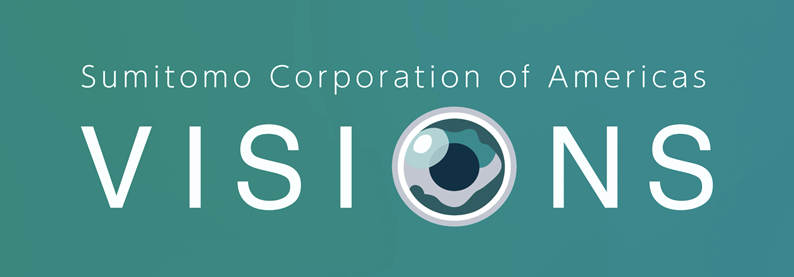VISIONS Magazine (May 2025 Edition)
Partnering with SHINE to Strengthen Global Supply Chain for Fusion-Based Technologies
.jpg?h=457.333&w=768.667)
pictured above: Chrysalis, the medical isotope production facility, using SHINE's proprietary production methods for isotopes
Sumitomo Corporation Group (SC Group), including Sumitomo Corporation of Americas (SCOA), has formed a strategic partnership with SHINE Technologies, a nuclear fusion company headquartered in Janesville, Wisconsin, to support the international distribution of fusion-based medical isotopes and industrial technologies. The collaboration aims to develop reliable logistics and regulatory pathways to serve Japan and other Asian markets.
In March 2025, the two companies signed a Memorandum of Understanding (MOU) to formalize the relationship. SHINE contributes its proprietary production methods for isotopes like lutetium-177 (Lu-177) and molybdenum-99 (Mo-99), while SC Group contributes deep market knowledge and experience in complex cross-border logistics.
“This MOU partnership aligns with SC Group’s mission to identify and support technologies that not only have strong commercial potential but also provide real societal value,” said Makoto Ebisui, Co-General Manager of Energy Services Dept., Energy Innovation Initiative Americas. “Fusion-based technologies, especially in the medical and industrial imaging sectors, offer groundbreaking benefits.”
Lu-177, a radioisotope used in targeted therapy for metastatic cancers, has been approved in Japan for neuroendocrine tumors and in the U.S. for prostate cancer. However, its short half-life—approximately 6.7 days—presents challenges for cross-border supply.

Image showing remission after Lu-177 therapy for metastatic, castration-resistant prostate cancer (mCRPC). Image at left: before PSMA-targeted therapy; image at center: after 1 cycle PSMA-targeted therapy; image at right: after 2 cycles PSMA-targeted therapy.
“Japan is particularly vulnerable to this issue due to its high dependence on imports,” Ebisui explained. “SC Group possesses strong expertise in obtaining permits and approvals for the transportation of radioactive materials and can also provide valuable knowledge in building a reliable radioisotope distribution network.”
Mo-99, which decays into technetium-99m and is used in roughly 85% of nuclear imaging procedures worldwide, has traditionally been produced in aging nuclear reactors with known supply risks. “Like lutetium-177, the supply chain for Mo-99 has historically been vulnerable to disruptions,” he added. “SHINE’s proprietary fusion-based method offers a promising alternative.”
Outside of healthcare, SHINE’s technologies can support industrial sectors such as manufacturing, aerospace, and materials testing. Neutron imaging, for example, enables nondestructive inspection of critical components like turbine blades or fuel system parts. However, many Asian countries lack established regulatory frameworks for fusion-based industrial services, adding complexity to market entry.

Pictured above: A comparison of Xray images vs a Neutron ray image
“Fusion-based services such as neutron imaging may not yet be fully covered by existing regulatory frameworks,” Ebisui said. “This can lead to unexpected approval challenges or ambiguous requirements, especially in markets unfamiliar with these advanced technologies. We plan to work closely with partners across Asia to streamline regulatory approvals for SHINE’s medical isotopes and neutron imaging technologies. Building local partnerships will be critical to adapting SHINE’s offerings to market-specific needs and gaining early traction.”
The broader objectives of the partnership also align with SC Group’s vision for a long-term transition to clean energy. “By partnering with SHINE to advance fusion-related technologies, we are laying the groundwork for a future where fusion becomes a viable, carbon-free, and virtually limitless energy source,” he noted. “We will leverage regional logistics expertise to create efficient supply chains. This may include exploring local production facilities or specialized distribution hubs.”
Ebisui emphasized that SHINE’s technologies are no longer speculative.
“The most important objective is to raise awareness that fusion-based radioisotope production has now reached the stage of commercial viability,” he said. “We believe it’s essential for stakeholders to recognize that this innovative technology is already being implemented to reliably supply critical medical isotopes. We are committed to realizing the full market potential of radioisotopes by ensuring that these advanced solutions are translated into tangible benefits for patients. By delivering high-quality, stable RI [ditto] supply to healthcare providers, we can help expand access to cutting-edge diagnostic and therapeutic services, ultimately improving patient outcomes.”
As SHINE and SC Group continue to refine their logistics strategy and expand regulatory access, this collaboration represents a coordinated effort to enable broader use of fusion-based technologies throughout Asia—supporting both public health and industrial resilience.




